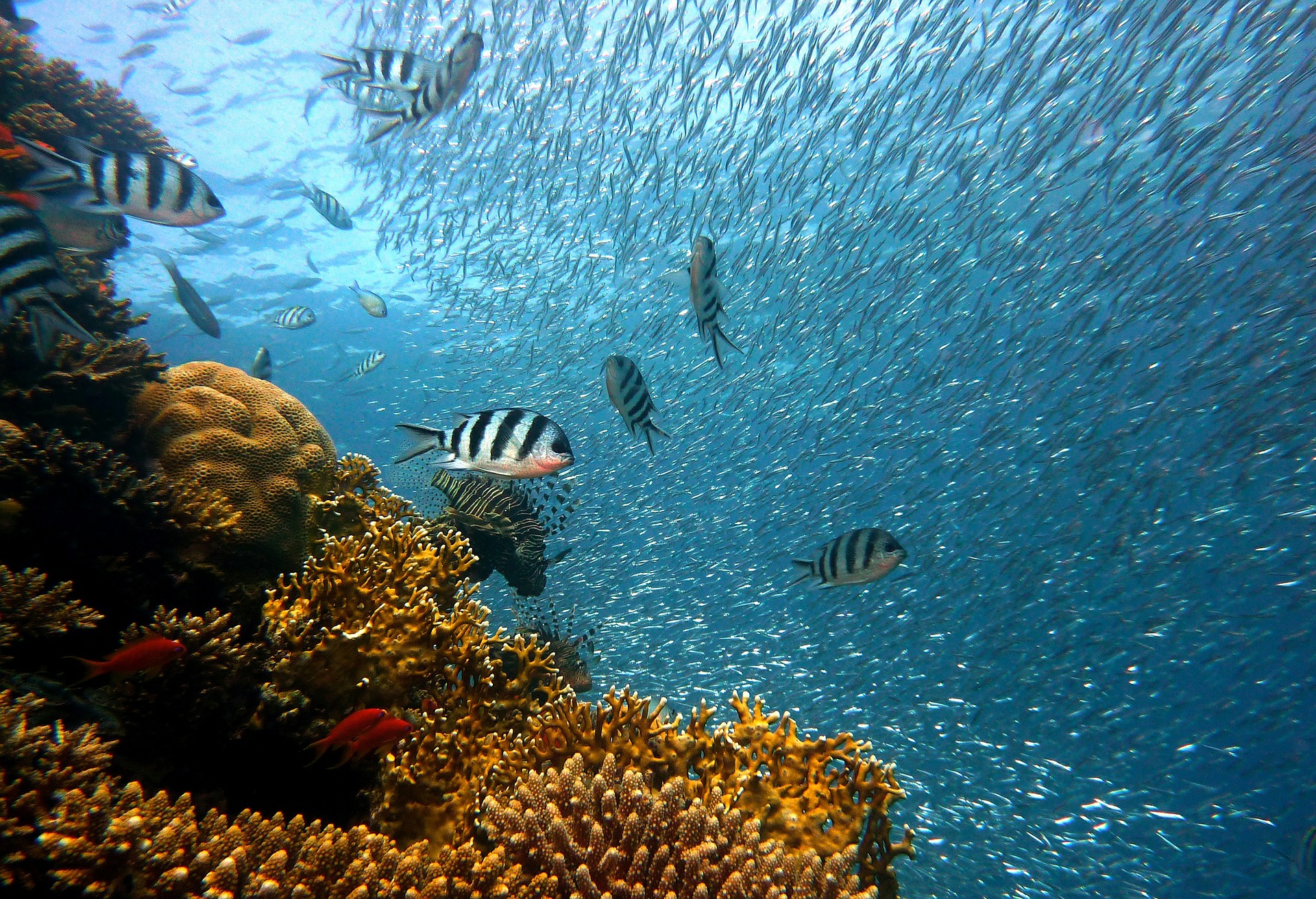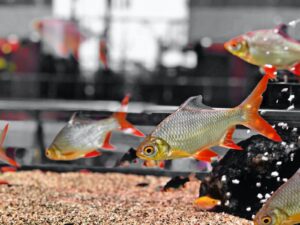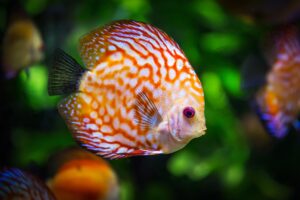Ok, so the question of ‘What is a group of fish called and why?’, may seem like an odd question, but the answer(s) to it will probably surprise you. Why? Because there are several answers to this question!
The correct answer to the above question is dependent upon what the group of fish is actually doing, which means there are several possible words that can be used to describe a group of fish.
What is the correct way to refer to a group of fish?
To describe a collection of things, we use words that are known as collective nouns. For example, in the title of this piece, we have used the word ‘group’ to describe a collection of fish. However, even though using the word ‘group ‘in this context is absolutely fine, there are a few terms that are just that little bit more appropriate (and will make you sound that little bit more clever!).
Let’s take the example of horses and birds. Sure, you could say a group of horses or a group of birds, but a ‘herd’ of horses and a ‘flock’ of seagulls are the ‘correct’ collective nouns. But what about fish?
Well, there are actually two different collective nouns used to describe a group of fish: a ‘school’ of fish and a ‘shoal’ of fish. The vast majority of fish species swim in large groups to protect themselves from predators.
Although ‘school’ and ‘shoal’ are the most common collective nouns for fish moving together in a group, there are actually different words that can be used depending on the species.
Species-specific collective names for a group of fish
In some cases, different collective nouns are used to describe a group of fish moving together. For example, dogfish are often referred to as a ‘troop’, whereas eels are commonly referred to as a ‘swarm’. Perhaps most amazing of all, however, is the collective name given to flying fish – a ‘glide’.
Of course, the words ‘shoal’ or ‘school’ can still be used to describe the above species moving together in a group, but the above is to merely exemplify that there are different words beyond ‘school’ and ‘shoal where some species are concerned.
Is there a difference between a ‘school’ of fish and a ‘shoal’ of fish?
A ‘shoal’ of fish is a group of fish that can be made up of a wide array of different species. Shoaling happens because it makes it far easier for a large group of fish to source food compared to individual fish carrying out the same task. Furthermore, working in unison in a larger group makes it easier for fish to find a mate; plus, it offers up way more protection against predatory fish and other aquatic predators.
Conversely, a ‘school’ of fish is a group of fish that is made up of the same species. Typically, a ‘school’ of fish will swim together in a synchronised fashion for the purposes of finding food, finding mates, preserve energy (as schooling helps to reduce friction which makes moving easier) and protecting themselves from predators. Huge ‘schools’ of fish can often confuse or potentially even scare off potential predators because the school moves with such precision and cohesiveness that it can often look like a large, solitary creature. Experts believe that up to 80 percent of all fish species gather in ‘schools’.
Although the phrases can be used interchangeably, it’s best to call a group of fish that contains different species and appears to be swimming casually a ‘shoal’. On the other hand, a group of fish (of the same species) swimming in a tight formation should be referred to as a ‘school’.
Of course, no one is going to pull you up on your terminology (unless you’re in the presence of a marine or aquatic biologist or scientist!), but using the correct terminology might help you come across as that little bit smarter or may even help you in a pub quiz one day!
What are the benefits of fish grouping together in ‘shoals’ and ‘schools’?
When a group of fish forms a ‘shoal’ or ‘school’, they are doing so for social reasons. For example, they could be protecting themselves from predators, searching for a new home, looking for food etc.
In fact, even when fish are swimming by themselves, they still swim in a such a fashion that is connected to the shoal. This isn’t surprising given that experts believe that around 25% of all fish species swim in ‘shoals’ and ‘schools’ for their entire lives, and 50% of fish species swim in groups for at least some of their lives. Examples of the former are species such a tuna, herring, and anchovy – who can actually become stressed if they’re separated from their school. An example of the latter is the Atlantic Cod.
Ultimately, when a fish swims with other fish in large groups, it is far, far less likely that they’ll end up as a predator’s dinner. Plus, it increases their chances of finding food sources and a mate, and the group as a whole can swim faster and more efficiently. It may seem odd that being in a large group of fish will increase the chances of finding a mate (you’d think the opposite would be true), but science has shown that fish prefer that are the same size and similar in appearance to them and the whole group. Why? Because a fish that stands out is more likely to be gobbled down by a predator!



